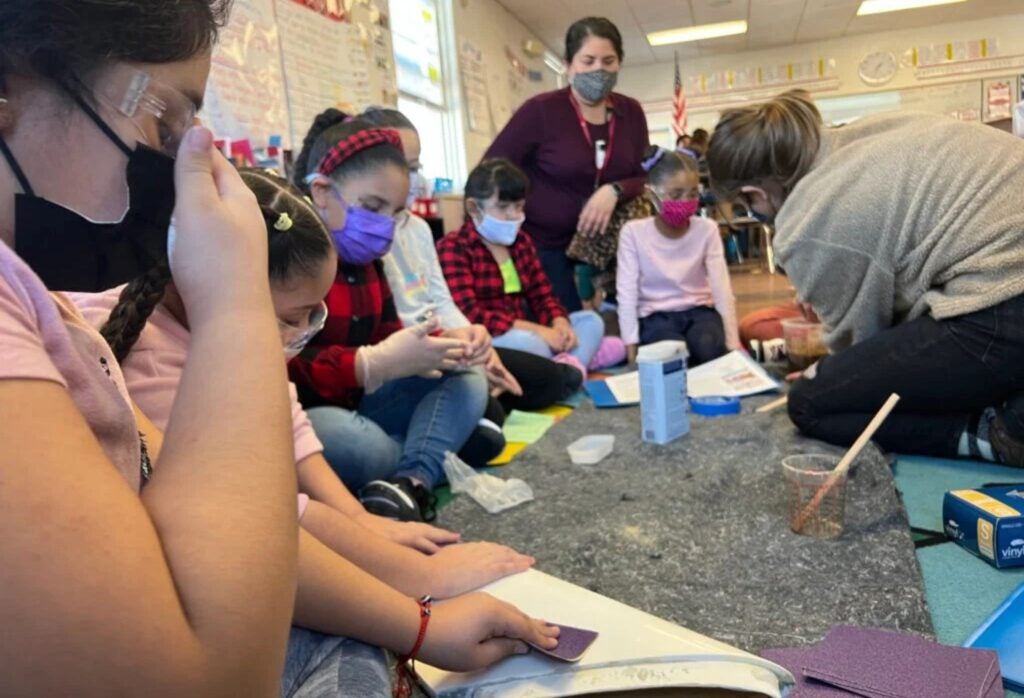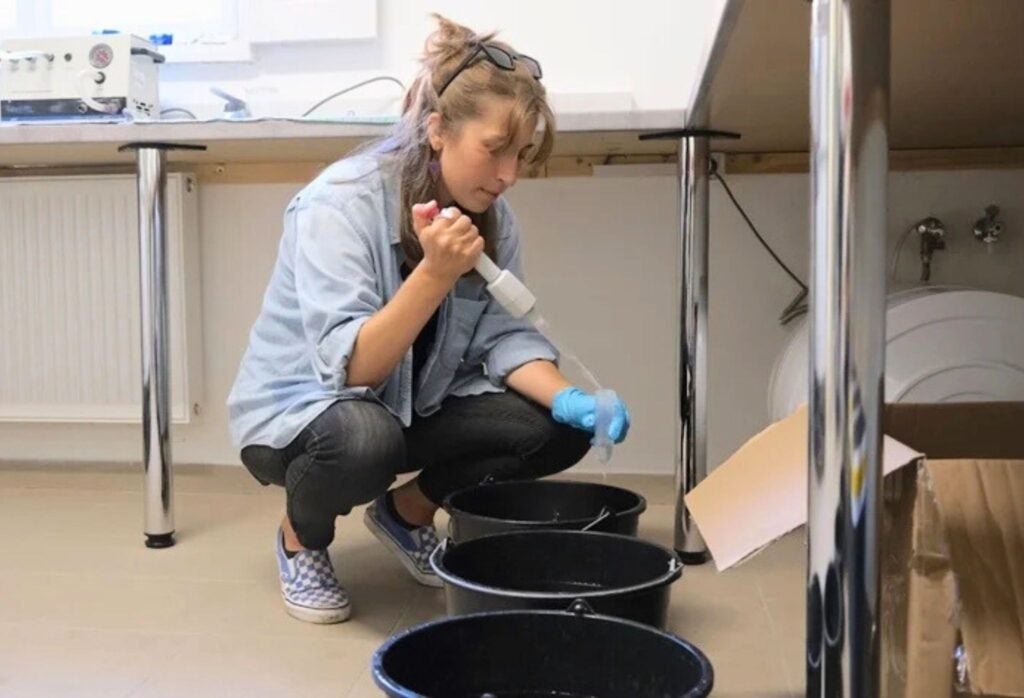Gabrielle Armin made educational outreach a priority as a URI doctoral student
May 7, 2025
Having published a dozen peer-reviewed articles in scientific journals, Gabrielle Armin, who will earn her Ph.D. from the University of Rhode Island’s Graduate School of Oceanography this month, can discuss her research with experts in her field. She can also talk about it with elementary school students.
“I tried to make the most of my time at GSO, learning as much as I could,” said Armin. “I am proud of my publication record and dedication to outreach while I have been here.”
As a self-proclaimed “Navy brat,” Armin and her family moved a lot, which contributed to her interest in oceanography. She refers to Pensacola, Florida, as her hometown, but she has also lived in Colorado, California, and Rhode Island.
“Living in various coastal communities inspired me to pursue oceanography,” said Armin.
After earning her bachelor’s degree in environmental engineering from the University of Florida, Armin’s desire to study oceanography came to fruition.

“I came to URI based on a recommendation from a previous mentor who raved about the research and campus culture at GSO,” said Armin.
Armin’s research has ranged from computer modeling to scientific diving, with a focus on quantitative microbiology in coastal waters. One of her most memorable research experiences involved a trip to Tihany, Hungary.
“I had the opportunity to study how temperature affects cellular processes of microscopic plants called phytoplankton,” said Armin. “Temperature can affect how nutritious these plants can be for other organisms that rely on them for food. In freshwater lakes, phytoplankton blooms can be especially affected by temperature and lead to decreased water quality.”
Quantifying the link between phytoplankton physiology and the environment was the subject of Armin’s dissertation.
“I used a scientific model, basically a series of math equations, that describes important biological processes in the cell and connects the cell to the environment by temperature, light intensity, or nutrient concentrations,” said Armin. “A model like this allows us to predict how phytoplankton may react to a changing environment and gives us insight into how the overall health of the ecosystem, or our climate, might be affected as a result.”
For the past four years, Armin worked with GSO’s Public Engagement Office to share her passion for ocean science with students in grades kindergarten through 12th.

“I want kids to know about different career options in the ocean realm,” said Armin. “When I was in school, if you were good at science and math, they pushed you toward medicine and engineering. But those aren’t the only options. I want our future scientists to know there is a place for them to follow their passions.”
Armin has led tours for students visiting GSO on field trips and delivered classroom lessons to public schools throughout Rhode Island, increasing environmental literacy and interest in marine science. She has participated in GSO’s Miniboat Program, empowering students to become community scientists and global ocean stewards. She’s also been a camp counselor for GSO’s summer oceanography camp, creating and facilitating lessons and activities for middle school and high school students.
“While helping students construct a miniboat, that was later released into the Gulf Stream on a research cruise, I engaged elementary, middle, and high school students in underrepresented communities of Rhode Island in oceanographic lessons and activities,” said Armin.
Armin was adept at making scientific concepts relatable and fun for students of all ages.
“Gabby is a scientist and, at the same time, a communicator,” said assistant professor Keisuke Inomura, Armin’s advisor. “She can convey complex ideas in simple terms, disseminating scientific knowledge to the broader public.”
Armin isn’t sure what the next step will be in her career, but she’s ready to make a difference in protecting the environment.
“I want to do my part to protect our coastal ecosystems and to work with coastal communities to understand their needs,” said Armin.

